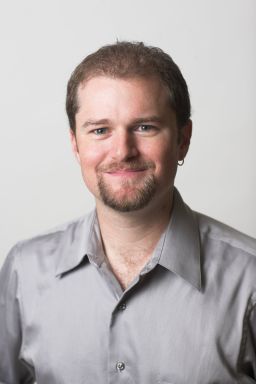Editor’s Note: David M. Perry is a freelance journalist focusing on disability issues. He is author of the new book, “Sacred Plunder,” and associate professor of history at Dominican University. He writes regularly at the blog: How Did We Get Into This Mess? Follow him on Twitter. The opinions expressed in this commentary are solely those of the author.
Story highlights
David Perry: When one's own child is diagnosed with Down syndrome, many people react with terror
Thanks to the power of the Internet, access to information and support has never been easier
Down syndrome, with all its promise and challenges, has never been more visible: Jamie Brewer, an actress with Down syndrome, just walked the catwalk at New York Fashion Week. A video of a girl with Down syndrome singing a John Legend song went viral, receiving 6 million page views and counting. People were so moved by the story of a father choosing his son with Down syndrome over his marriage that they donated over $500,000 to his care (although the father’s story has now been called into question).
The Down syndrome community, on a regular basis, inspires its members with stories about accomplishments, loving families and overcoming challenges. I love these stories and they make me happy. Somehow, though, their impact is limited. Despite the good press and the outpouring of support, when one’s own child is diagnosed with Down syndrome, far too many people react with a toxic combination of fear and terror.

Fortunately, there are antidotes: information, experts and community. Thanks to the power of the Internet and the commitment of activists, politicians and experts of all sorts, access to these antidotes has never been easier.
Here’s an example of the power of sharing information:
At about 7 a.m. one day last November, Claudia sent me a Facebook message about her best friend, Jane. (All names have been altered.) Jane was pregnant with twins, one of whom had been diagnosed with both Down syndrome and a heart defect. Jane and her spouse were stuck in that toxic panic and didn’t know what to do. Claudia wrote, “They told me it’s super easy to find adoptive parents because lots of people want kids with special needs. Right now, their plan is to leave the baby at the hospital, and failing that the fire station.”
I was startled by the message, but not shocked. I’m the father of a boy with Down syndrome and had at least an inkling of what Jane was going through. On the other hand, although safe haven laws make leaving a child at the hospital legal, and American children with Down syndrome do often get adopted, this clearly wasn’t the right way to go about it. So I told Claudia I’d be back shortly to help, got my own children safely off on the bus to school, and returned to my computer 40 minutes later.
Soon, I was talking to Amy Allison, the executive director of the Down Syndrome Guild of Greater Kansas City. Fifteen minutes later, Amy had connected me to Stephanie Thompson, the co-director of the National Down Syndrome Adoption Network. Stephanie reached out to Claudia and from there to Jane.
Over the next few weeks, Jane and her spouse started talking to potential adoptive parents, but also got plugged into all the resources for families of people with Down syndrome. Eventually, as the hazy fear of diagnosis burned off, and thanks to the couple’s own desire to learn more, their perceptions changed.
Jane has now given birth. One of her twins does indeed have Down syndrome. The new parents are keeping both children. Today, in Claudia’s words, “They’re stressed out and scared but in love with their babies and looking forward to when the four can be home together.”
Claudia and I may be Facebook friends, but we have never met and don’t really know each other. It’s amazing that this tenuous contact between us helped shift the outcome for Jane and her family. It points out a positive way in which the Internet has changed the experience of raising a child with special needs.
The moment of diagnosis is terribly jarring, no matter when it takes place. It throws you from a world for which you thought you were preparing into some other strange place. You grieve. You wall yourself off. While the circumstances of my son’s diagnosis were different than Jane’s, the hours and days after were very difficult. In fact, I’ve spoken to hundreds of parents about their experience, and we mostly all felt alone and afraid.
In a previous era, Jane’s story might have played out very differently. Access to basic information about Down syndrome was hard to come by, even from medical practitioners, and it was a challenge to make contact with experts and other parents. Now, Jane and many like her can plug into a vibrant and informed community almost instantly.
Whether it’s parents of children with well-known disabilities, people dealing with rare diseases, or any other subset of humanity that has a hard time locating face-to-face community, it’s far easier to connect on the Internet.
Social media provides a highly mediated and algorithmically-driven commercial environment that at best mirrors real relationships. It’s often criticized for destroying American family life. But I feel lucky to have these communication tools at my disposal, even if I’m just sharing small struggles and tiny victories – how to help with sleeping issues, the triumph of my son eating a scrambled egg for the first time in his life, or wondering how to make a haircut less traumatic for all involved. And sometimes, as with Jane, the stakes are much higher.
These are the stories about Down syndrome that don’t make news, and maybe that’s OK, so long as people know that these networks exist. There are thousands, maybe tens of thousands, of people with and without disabilities ready to respond not with fear or judgment, but with information and empathy.
Read CNNOpinion’s new Flipboard magazine.
